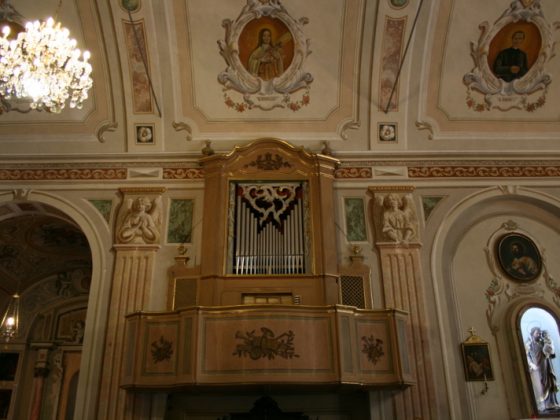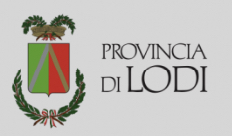40. The Parish of San Pietro Apostolo
40. The Parish of San Pietro Apostolo
- Address: Mezzana Casati San Rocco al Porto
Mezzana Casati is a small agricultural village with a remote origin, owned in the past by the convent of Saint Sisto of Piacenza. In the XII century it was owned by the Visconti family and from 1494 by the Conti counts. During the Napoleonic period, in 1798, Mezzana was annexed to the Cisalpine Republic, following since then the fates of the Lodi area. In 1809 it became a hamlet belonging to Noceto. Mezzana recovered its independence with the establishment of the kingdom of Lombardy-Veneto (1816), and was included in the territory of Codogno in the province of Lodi and Crema. In 1863 the municipality took the name of Mezzana Casati and in 1869 was annexed to San Rocco al Porto.
First proof of a religious settlement at Mezzana Casati dates back to the XVI century, when in 1566, during the pastoral visit of the Bishop of Piacenza Bernardino Scotti, the church of San Pietro became a parish of the diocese of Piacenza.
On 16 March 1819, by order of Pius VII, the parish of Mezzana Casati was separated from the diocese of Piacenza and was unified with the diocese of Lodi.
The church of San Pietro Apostolo of Mezzana Casati di San Rocco al Porto has a single nave, two symmetrical, rectangular chapels positioned in the arms of the transept; the rectangular presbytery is located before the right-hand chapel and the square bell-tower is located between the rectangular presbytery and the right-hand chapel. The central nave is covered by a cross vault as are the side chapels and the presbytery.
Inside the church, in the wooden choir stalls there is an organ built by Giovanni Chiappani da Pavia in 1647 and transformed in 1882 by Angelo Cavalli di Lodi. It has a facade composed of nineteen tin pipes, arranged in a single span forming two side wings and a central spire.
The church and the organ respectively have been subject to renovation and restoration and are part of the Lodigiano per Expo: terra buona percorsi di fiume, (The Lodi area for Expo: a fine land crossed by rivers), launched by the Province of Lodi, in 2010 together with numerous public and private partners which was completed in 2014 and was made possible thanks to the financial support of the Region of Lombardy and the European Union.

Mezzana Casati is a small agricultural village with a remote origin, owned in the past by the convent of Saint Sisto of Piacenza. In the XII century it was owned by the Visconti family and from 1494 by the Conti counts. During the Napoleonic period, in 1798, Mezzana was annexed to the Cisalpine Republic, following since then the fates of the Lodi area. In 1809 it became a hamlet belonging to Noceto. Mezzana recovered its independence with the establishment of the kingdom of Lombardy-Veneto (1816), and was included in the territory of Codogno in the province of Lodi and Crema. In 1863 the municipality took the name of Mezzana Casati and in 1869 was annexed to San Rocco al Porto.
First proof of a religious settlement at Mezzana Casati dates back to the XVI century, when in 1566, during the pastoral visit of the Bishop of Piacenza Bernardino Scotti, the church of San Pietro became a parish of the diocese of Piacenza.
On 16 March 1819, by order of Pius VII, the parish of Mezzana Casati was separated from the diocese of Piacenza and was unified with the diocese of Lodi.
The church of San Pietro Apostolo of Mezzana Casati di San Rocco al Porto has a single nave, two symmetrical, rectangular chapels positioned in the arms of the transept; the rectangular presbytery is located before the right-hand chapel and the square bell-tower is located between the rectangular presbytery and the right-hand chapel. The central nave is covered by a cross vault as are the side chapels and the presbytery.
Inside the church, in the wooden choir stalls there is an organ built by Giovanni Chiappani da Pavia in 1647 and transformed in 1882 by Angelo Cavalli di Lodi. It has a facade composed of nineteen tin pipes, arranged in a single span forming two side wings and a central spire.
The church and the organ respectively have been subject to renovation and restoration and are part of the Lodigiano per Expo: terra buona percorsi di fiume, (The Lodi area for Expo: a fine land crossed by rivers), launched by the Province of Lodi, in 2010 together with numerous public and private partners which was completed in 2014 and was made possible thanks to the financial support of the Region of Lombardy and the European Union.


